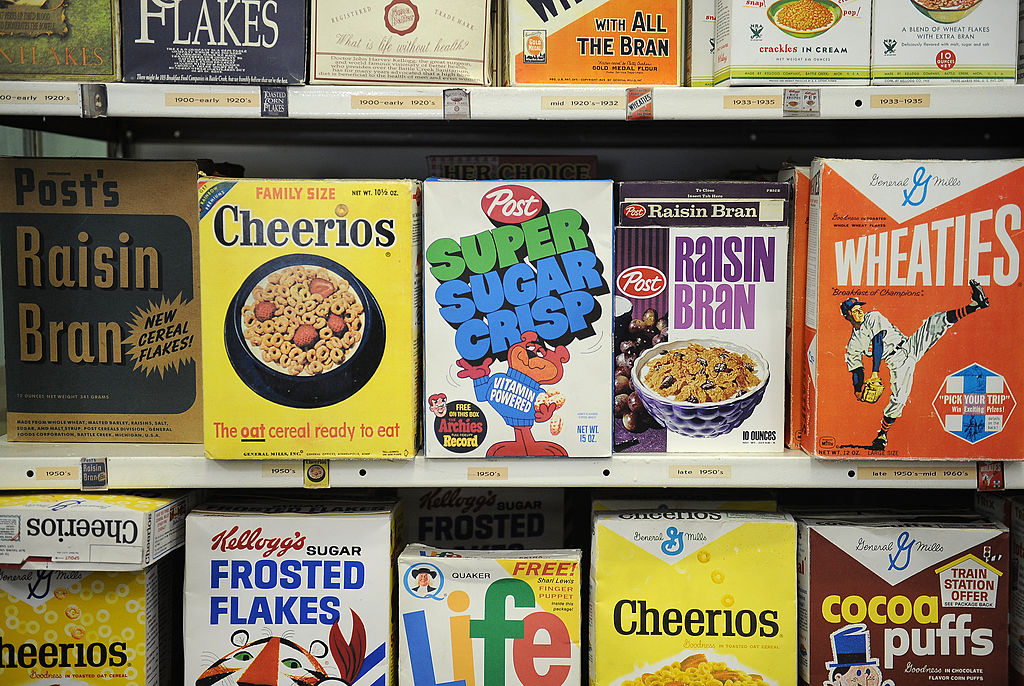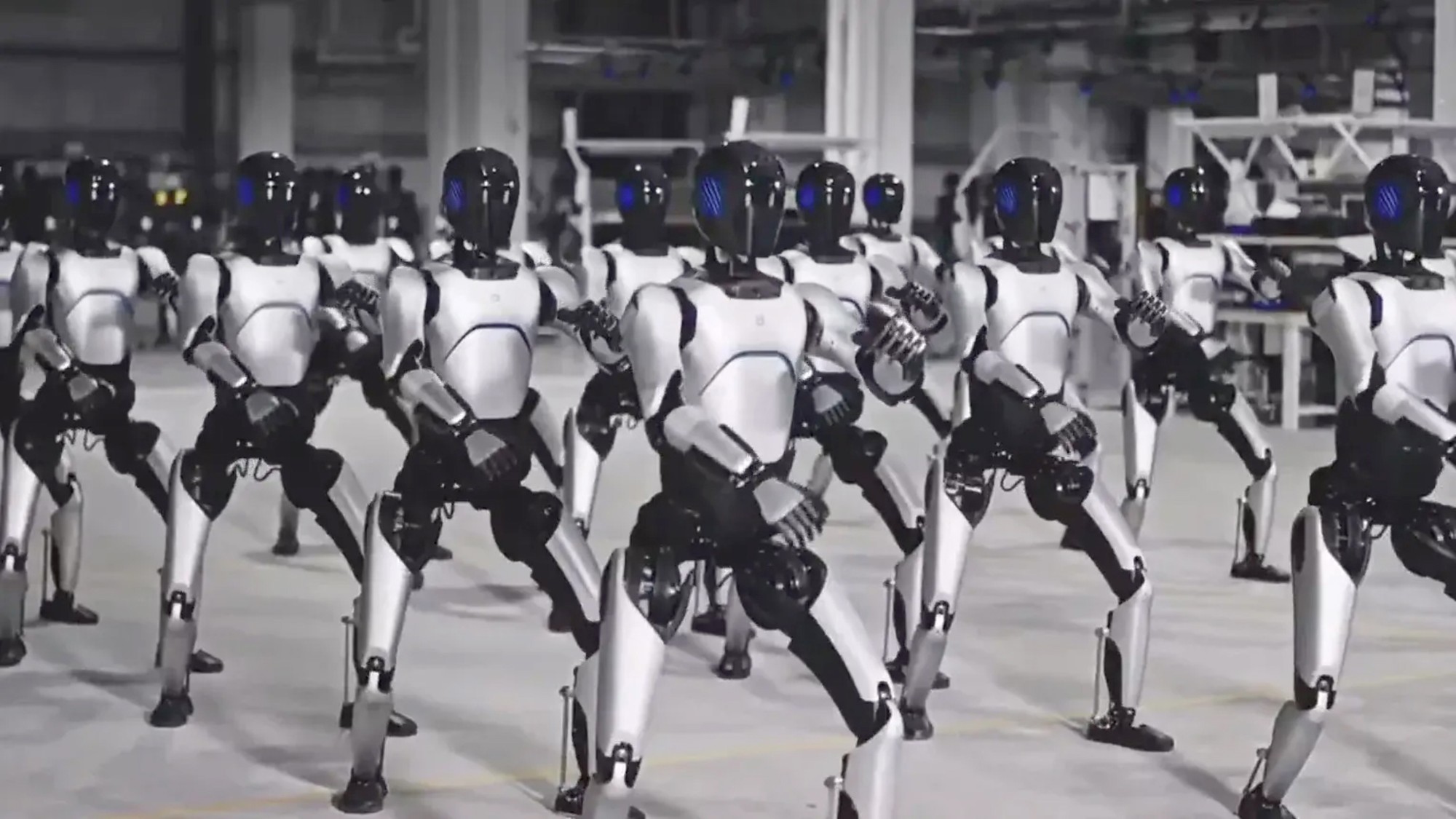A brief history of cereal box collectors
A small group of collectors scours eBay for rare, decades-old boxes of Cap'n Crunch and Wheaties

Duane Dimock once paid $450 for a box of cereal. But this wasn't the makings of a week of very expensive breakfasts. Rather, it was the box itself that he was after. Dimock belongs to a small niche group of hobbyists who collect cereal boxes, and in their world, $450 doesn't raise many eyebrows.
Last summer, an unopened package of Post Ten — the now-defunct variety pack of mini cereal boxes — dating back to 1961 sold for a whopping $2,550 on eBay. Just a few weeks ago, a box of Quaker Quisp from the same era fetched over $2,100.
What fuels people to drop the equivalent of six months of groceries on a single box of cereal? To answer that question, one must first get familiar with breakfast cereal's trajectory from a lowly morning meal to an American pop culture icon.
The Week
Escape your echo chamber. Get the facts behind the news, plus analysis from multiple perspectives.

Sign up for The Week's Free Newsletters
From our morning news briefing to a weekly Good News Newsletter, get the best of The Week delivered directly to your inbox.
From our morning news briefing to a weekly Good News Newsletter, get the best of The Week delivered directly to your inbox.
Descended from its early ancestor, porridge, the first cold breakfast cereal was invented in the U.S. in the 1860s. Called Granula, it never quite captured the hearts of American consumers, due to a lack of convenience — the nuggets had to be soaked overnight in milk before they could be consumed without chipping a tooth. (It probably wasn't too tasty, either, as it only had two ingredients: graham flour and water.) It took a young doctor from Battle Creek, Michigan, named John Harvey Kellogg to take cereal fully mainstream. His lighter, crispier Corn Flakes — originally created to feed sanitarium patients — were practically an overnight success, and by the early 1900s dozens of cereal companies, including fellow heavy-hitter Post, had popped up in Battle Creek.
It wasn't until after World War II that cereal companies began targeting kids. In 1948, Post introduced its first sugarcoated cereal, Sugar Crisp, along with an animated TV commercial, and its competitors quickly followed suit. In 1951, Kellogg's unveiled its feline mascot, Tony the Tiger, who convinced kids all over the nation how "Grrr-r-rreat!" the company's Frosted Flakes were. Sweetened cereals came to dominate the market, bolstered by product placement in cartoon shows that helped manufacturers hook an entire generation of children (and, by extension, their future children and grandchildren).
Like collectors of many other breeds, from baseball cards to pinball machines, cereal box aficionados are fueled largely by nostalgia. "I have vivid memories of sitting around on Saturday mornings watching cartoons with a bowl of Cap'n Crunch or Fruity Pebbles in front of me," says Gabe Fonseca, a television writer from L.A. who's been collecting cereal boxes for a decade. Like many others, he fell into the hobby mostly by accident, when an eBay search for something unrelated brought up a 1995 box of Spider-Man cereal, one of his childhood favorites. "It was cheap, so I thought, ‘What the heck, why not?' and bought it." Things snowballed from there, and Fonseca has now amassed more than 300 cereal boxes.
For Dimock, the cereal box fixation began more than 40 years ago when he began stashing away unopened premiums — that's collector-speak for the prizes that come inside cereal boxes — in hopes they'd be valuable someday. As it turns out, it's the boxes themselves rather than the premiums that are typically worth more cash, because, as Dimock explains, fewer of them survived intact.
A free daily email with the biggest news stories of the day – and the best features from TheWeek.com
The cereal box's innately disposable nature seems to be one of the things that attracts collectors — unlike, say, baseball cards, they were never intended to be saved. (They're also colorful and easy to display, which certainly doesn't hurt.) After all, people who purchase Froot Loops do so strictly in pursuit of the sugary little Os inside; as soon as those are gone, the packaging is discarded and carted off to a landfill (or, with any luck, a recycling facility). One of Dimock's most prized specimens in his collection of an estimated 10,000 boxes is an original Kellogg's Corn Flakes box from 1906, which only survived because for decades it had been used as padding for the back of a picture frame.
But in the cereal box world, the oldest boxes aren't necessarily the most valuable. Case in point: Dimock once purchased a box of Granum — an early wheat cereal product marketed as "the best food for invalids and convalescents" — dating back to 1869 for the paltry sum of $34 on eBay. As Fonseca explains, the value of any particular cereal box is highly subjective. "Boxes are only as valuable as what someone else is willing to pay," he points out.
As the collectibles boom of the '90s took hold (hello, Beanie Babies) and more people became aware of the potential value of cereal boxes, they began stashing them away accordingly. "It seems highly unlikely that the cereal hobby will ever be large enough to absorb that glut of 1990s boxes," a New York City–based collector named Jason Liebig argues on a popular cereal box collectors' forum called CerealBits. "Once books are written about a hobby, things change. But some boxes will still shine through, of course."
The most desirable boxes, then, are the ones with widest appeal: boxes emblazoned with popular cartoon characters, sports stars, or musicians, and those featuring a mail-in offer that could be sent off for some sort of limited-edition prize (think decoder rings and toy Navy boats). Often, the cereal box market intersects with other popular collectible categories. One of Fonseca's most prized items is a box of New Kids on the Block cereal from a brief test run in 1990; it never actually made it into production, making it extremely rare. A pair of boxes of Nabisco Wheat Honeys and Rice Honeys from the late 1960s with a Beatles Yellow Submarine tie-in recently popped up on eBay for an astronomical $11,000. Superhero-themed boxes are also wildly popular.
But while nostalgia may be universal, the cereal box–collecting community is remarkably small: Liebig, who also runs a site called CollectingCandy.com, estimates that there may only be a few dozen active collectors out there today. CerealBits, the most popular online discussion forum for hobbyists, has just 97 active members, but many of those are "crossover" collectors, like Star Wars obsessives who collect the various limited-edition Star Wars cereals, or sports memorabilia lovers who collect Wheaties boxes.
In the pre-internet era, collectors mainly found one another via various fan zines, such as one from a collector named Mikal Vollmer called Free Inside that launched in 1988. These days, zines have been replaced by YouTube channels, and collectors congregate almost entirely online, in Facebook groups and discussion forums like CerealBits, where they post tales of triumph — like finally completing a set of 1964 pirate-themed Cap'n Crunch premiums — and report on trends (such as the fact that Wheaties boxes from the 1970s featuring Olympic athlete Bruce Jenner are now fetching record prices).
Fonseca, for his part, hosts a surprisingly captivating YouTube series called "Cereal Time" in which he discusses cereals both new and old — including many coveted finds from the era in which he grew up, the '80s and '90s, such as Urkel-Os, C3POs, and Ghostbusters cereal. As his more than 2,000 YouTube subscribers prove, you don't have to be a hard-core collector to be enthralled by Fonseca's videos. "Even people who find this hobby strange — and there are many — still enjoy looking at the boxes and reminiscing about a particular cereal they used to eat," he says.
According to Liebig, the online community, no matter how small, has changed the collecting game. "I believe that in the post-eBay and post–social media world, the importance of face-to-face meet-ups has evaporated, whereas in the past they were key to building a collection," he says. Before online auctions and discussion forums, tracking down a rare cereal box could require months (or even years) of following leads from other collectors and traveling to in-person swap meets; nowadays, it can be as easy as a simple eBay search and plunking down some cold hard cash.
But even with the internet at their fingertips, not all collectors are able to satisfy their ultimate cereal-box wish list. The elusive specimen that keeps Liebig up at night is a box of Super Sugar Crisp circa 1975 that came with an 11-by-14-inch glow-in-the-dark poster of Frankenstein inside. "That's one I remember so well from when I was a kid, but it's one I'm not likely to ever find or add to my collection," he says, noting that to his knowledge, only two have ever surfaced.
For Fonseca, his white whale was literally a whale. "For years I had been trying to find a box of Lucky Charms that came out around 1986 with swirled whale marshmallows," he explains. "I found commercials on YouTube for it and pictures online, so I knew I wasn't imagining the box, but I could never track one down." He eventually tracked down a collector via an online forum who was willing to part with his, and says these days he feels like his collection is more or less complete.
But for others, like Dimock, the thrill of the hunt is the biggest draw. The near-infinite variety of cereal boxes, along with the scarce supply, is what keeps many collectors enthralled. Despite already owning a veritable cereal box museum — including a prized set of Cap'n Christmas Crunch boxes stretching back to 1988 — he knows there are plenty more boxes out there in the world just waiting to be discovered. "Nobody wants to stop collecting," he says. "They just want to keep going."
Originally published on Eater.com, which is owned by Vox Media, Inc. Reprinted with permission.
-
 Pipe bombs: The end of a conspiracy theory?
Pipe bombs: The end of a conspiracy theory?Feature Despite Bongino and Bondi’s attempt at truth-telling, the MAGAverse is still convinced the Deep State is responsible
-
 The robot revolution
The robot revolutionFeature Advances in tech and AI are producing android machine workers. What will that mean for humans?
-
 Health: Will Kennedy dismantle U.S. immunization policy?
Health: Will Kennedy dismantle U.S. immunization policy?Feature ‘America’s vaccine playbook is being rewritten by people who don’t believe in them’